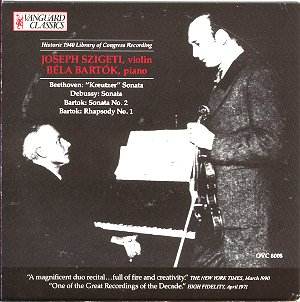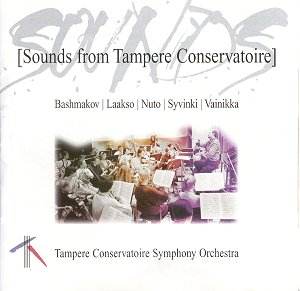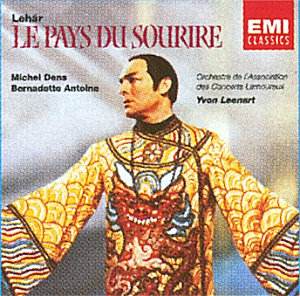 Composer: Claude Debussy
Composer: Claude Debussy
Works: Violin Sonata
Performers: Joseph Szigeti, violin; Béla Bartók, piano
Recording: Library of Congress, Washington, April 13, 1940
Label: Vanguard OVC 8008
The Violin Sonata by Claude Debussy, completed in 1917, stands as a testament to the composer’s innovative spirit during a tumultuous period. This work, characterized by its harmonic experimentation and rich textural palette, showcases not only Debussy’s lyrical genius but also his ability to weave the intimate with the profound. The recording of the sonata performed by Joseph Szigeti and Béla Bartók, captured live at the Library of Congress, offers listeners a rare glimpse into a pivotal moment where two titans of the early 20th-century music scene converged.
Szigeti’s interpretation of Debussy’s sonata is both illuminating and nuanced. His approach to the opening movement, Allegro, is marked by a compelling tension between clarity and expressiveness. The violinist’s tone, while less opulent than that of his contemporaries—such as the illustrious Thibaud—embodies a unique sensitivity that serves the music well. Notably, Szigeti employs a precise use of portamento, which brings an emotional depth to the lyrical lines. Bartók’s piano accompaniment complements Szigeti’s playing; his rhythmic vitality and dynamic subtleties breathe life into the intricate harmonic structures of the piece. The interplay between the two musicians is particularly striking in the Intermède, where Bartók’s percussive touch contrasts beautifully with Szigeti’s ethereal phrases.
The recording quality is remarkable for its time, capturing the immediacy of a live performance while allowing the nuances of both instruments to shine through. The spatial separation between violin and piano is effective, enabling the listener to appreciate the distinct colors each performer brings to the dialogue. The engineering ensures that the delicate subtleties—such as Bartók’s nuanced use of broken chords—are not lost, presenting a vivid auditory landscape that feels both intimate and expansive.
Szigeti’s technical prowess is on full display throughout the performance, although certain passages reveal a slight roughness that may be attributed to the live setting. For instance, his bowing in the first movement occasionally lacks the smoothness one might expect in a studio recording, yet this very imperfection adds a layer of authenticity, reflecting the spontaneous nature of live music-making. Comparatively, Szigeti’s interpretation diverges from the more polished renditions by violinists like Heifetz, yet it is precisely this rawness that conveys the emotional urgency of the work.
The final movement, which unfolds with a blend of playfulness and gravitas, showcases the duo’s ability to navigate contrasting moods with dexterity. Bartók’s playful, rhythmic insistence is met with Szigeti’s eloquent phrasing, creating a dialogue that is both spirited and profound. The climactic moments are executed with a thrilling intensity that leaves a lasting impact, underscoring the deep collaborative understanding shared between the two musicians.
This recording of Debussy’s Violin Sonata is not merely a document of a performance; it is a significant milestone in the recorded history of classical music. The partnership of Szigeti and Bartók illuminates the interpretive possibilities inherent in the work, making it a vital addition to the catalogue. The preservation of this concert is a testament to the artistic heights achieved by these two musicians, whose work continues to resonate with audiences today. The synthesis of emotional depth, technical skill, and historical context in this performance establishes it as an essential listening experience for both aficionados and newcomers to Debussy’s oeuvre.



